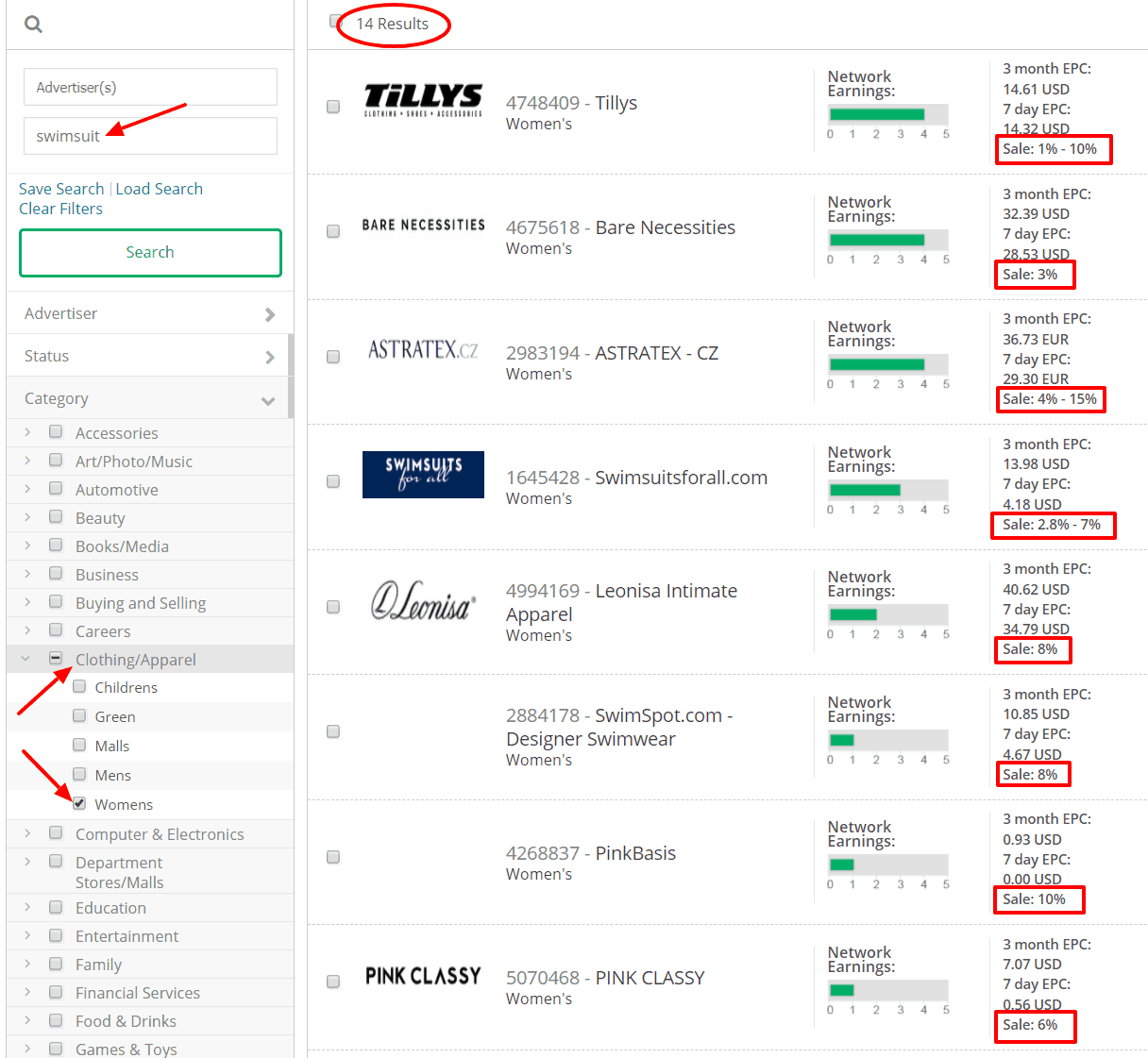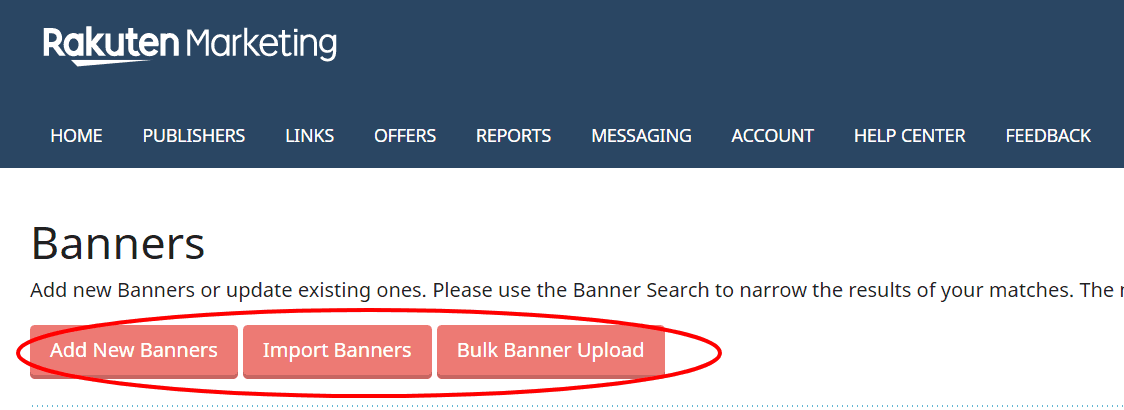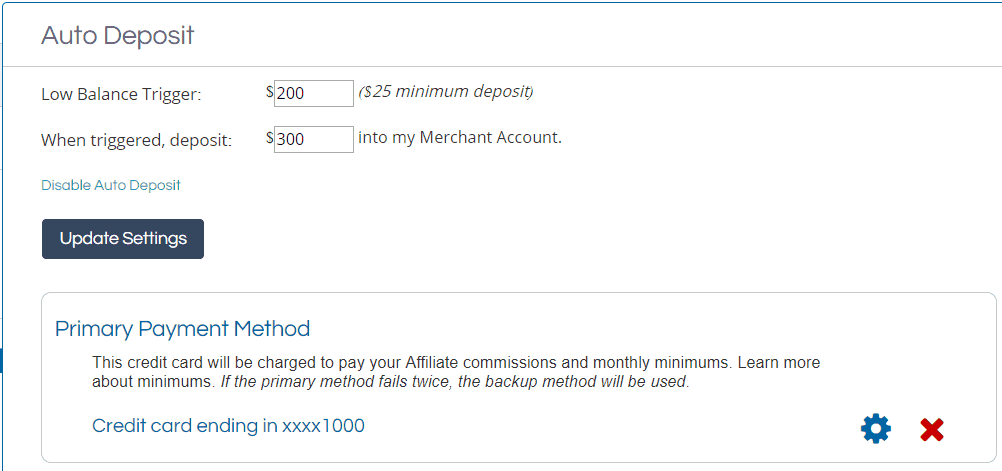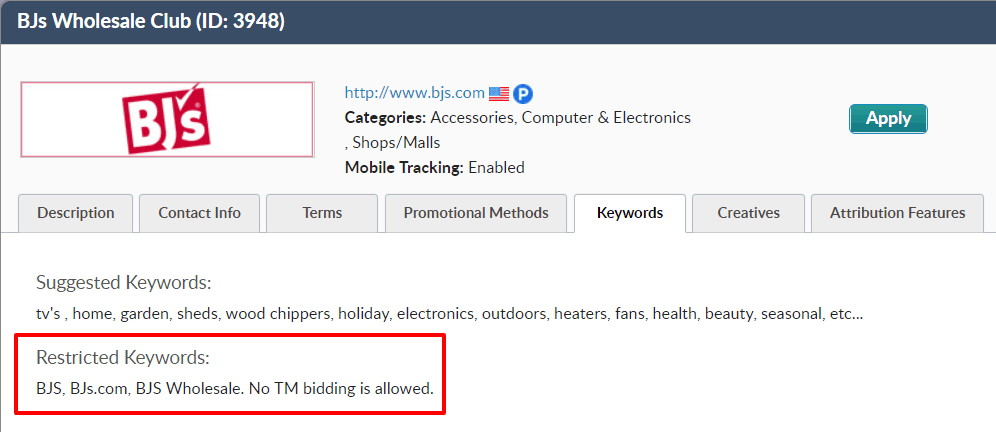Your online business is doing well. You have good traffic, a strong following, yet you feel like you need another jolt to keep growing. This means it might be time to launch an affiliate program, but where do you start? Today I’m going to go over several mistakes to avoid when launching a new affiliate program.
Failing to Understand the Competitive Landscape
Regardless if you have already been in business for a while or you’re getting ready to start a business, you should have a good idea who your main competition is and how they operate. You should know what their products are, how they compare to yours, how their prices compare, etc. It is no different when you’re launching your affiliate program. You’re going to want to dive into this competitive intelligence analysis all over again except this time you want to take a closer look at how they are marketing and specifically – how they are doing it through affiliates. To exemplify this, see the below matches for keyword “swimsuit” found on CJ affiliate network, narrowed down by category Clothing, sub-category Women’s, and sorted by “network earnings”:

If your competition doesn’t have an affiliate program then you’re going to have to be a trailblazer. It will be up to you to determine your offer to affiliates without seeing any existing blueprint. If they do have affiliate programs then you should be able to get a good idea of what is working for them and structure your program in a way that’s more competitive and more appealing to affiliates. Spending your time on the competitive intelligence positions you to put together an offer for affiliates that’s better than your competition. If you fail to understand the competitive landscape, you could end up launching an affiliate program with an inferior offer compared to your competition and the program will never get off the ground. If affiliates can do better promoting your competition, why would they work with you?
Going Live Before the Program is Fully Set Up
Another mistake you want to avoid when launching a new affiliate program is setting your program live before you have everything in place. Now you may ask: “What do you mean by ‘everything?'”
Here is a list of several elements of an affiliate program you want to make sure are set up and working correctly before going live:
Automated Emails
Most affiliate programs have three different automated emails that you want to have set up to email your affiliates at key junctures in the application process. The first email is when an affiliate applies. This “affiliate application receipt” email is pretty short and basically just says that you’ve received their application and it is now being reviewed. You also want to give them an estimated response time (doing your best to stay within 48 hours), and encourage applicants to contact you if they have any questions after applying into your affiliate program. You typically will include an affiliate manager’s contact info in this email as well as the other two we’re about to talk about.
The second email is sent if you happen to decline an affiliate who applied. This “decline” email should explain in a few sort sentences why they may have been declined and then also that they can contact you if they have any questions about this decision.
The third email is the most important of the three. This is the “approved” email, which is sent to affiliates when you accept them into your program. This email should contain the most information of the three because this is the first message your new affiliate receives from you upon being accepted into your program. Make sure to include (i) a personal message from the company’s executive or the affiliate manager, (ii) the key information about your program’s offer such as your commission payout and cookie length, and also (iii) some of your creative materials (banners and text links), and (iv) an activation incentive to get the new affiliate motivated to start advertising your product right away. I would even go as far as to say that this “approved” email is the most important asset that you have when you launch your affiliate program.
Some affiliate networks send their own automated emails when affiliates apply and when they’re declined. However, most of them will have a place where you can customize the text and create your own unique approval email.
Text Links and Banners
The next things that you want to make sure you have set up before you officially set your program live are your text links and banners – commonly referred to as affiliate creatives. Most affiliates use text links when sending their traffic to your site but there are some that like to use the banners too – so you want to make sure you have both. This way affiliates will be equipped right when they’re accepted. Here is where you would add your banners (one-by-one or in bulk) if your affiliate program is run on Rakuten (LinkShare) affiliate network:

Funding
You always want to make sure you have your funding system squared away. One of the worst things that could happen to a new affiliate program is that, once you start paying out commissions, your in-network funds run dry and the affiliate network turns your links dead. Most networks allow you to place a credit card on file as a primary or back up source of funding. We highly recommend doing this and highlighting this in your communication with affiliates. If your affiliate program setup ensures that your account never runs dry – it provides your affiliate partners with an assurance that they will always get paid for the conversions they refer. Below you may see an example of how to set up auto-deposits within ShareASale affiliate network:

Not Confirming Proper Tracking Setup
I don’t think there is an affiliate network in existence that would let you set a program live without first ensuring the proper tracking by running a test transaction. However, it’s so important that we needed to make note of it anyway. If your tracking is broken your affiliates will soon realize they aren’t getting credit for their sales and they will quickly drop you as a merchant partner. Make sure that you place a test affiliate transaction and check within the network to make sure everything reported correctly.
Launching Without an Affiliate Agreement or Policies
The final mistake you want to make sure you avoid when you launch a new affiliate program is not having your affiliate agreement (commonly known as the affiliate program’s Terms of Service) and related policies in place. Some networks can help you with a standard affiliate agreement if you happen to not have one but it’s also a good idea to write one up with your legal counsel.
Speaking of the policies that affiliates need to comply with, sometimes you set these up within the Terms of Service agreement, and sometimes separately of (or in addition to) it. Among the most important things to cover here are (i) your paid search policy, (ii) your domain name policy, (iii) your coupons and discounts policy, and (iv) the rules related to content and placements. All of these work hand in hand with the affiliate agreement. You want to make sure that all of this is in place so that you can set it straight from the beginning what the expectations are with advertising your brand. Here is an example of how BJ’s Wholesale Club spells out restricted keywords in their program based on Pepperjam affiliate network:

As AM Navigator‘s founder and CEO, Geno Prussakov, always says: “Remember that affiliate networks’ agreements are generic and do not cover individual brand-specific concerns.” This is why it is important for your affiliate program to have an agreement and policies of your own.
Good luck with your affiliate program launch efforts and feel free to email us or comment below with any ideas or questions.
Wow i love this idea, i have learned a lot from it, it will help me more